new mexico
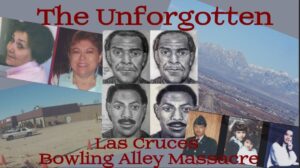 Evil can be just around the corner, and sadly, sometimes, the evil doers walk away without being punished for their crimes. On the morning of February 10, 1990, the staff at Las Cruces Bowl were busy getting ready for the Saturday bowling crowd, when two armed men walked in through an unlocked door. The men were there to rob the place. They could have worn masks, or they could have just robbed the place and fled the scene, but they had no intention of being caught, and that meant that they couldn’t leave witnesses.
Evil can be just around the corner, and sadly, sometimes, the evil doers walk away without being punished for their crimes. On the morning of February 10, 1990, the staff at Las Cruces Bowl were busy getting ready for the Saturday bowling crowd, when two armed men walked in through an unlocked door. The men were there to rob the place. They could have worn masks, or they could have just robbed the place and fled the scene, but they had no intention of being caught, and that meant that they couldn’t leave witnesses.
Stephanie C Senac, 34, who was the bowling alley manager, was in her office preparing to open the for the day. Her 12-year-old daughter Melissa Repass and Melissa’s 13-year-old friend Amy Houser were there to supervise the alley’s day care. The gunmen took them into the office, where they robbed them of a mere $4,000 to $5,000. As robberies go, it was practically nothing. When bowling alley mechanic Steven Teran came in with his two young daughters, Paula Holguin and Valerie Teran, they were totally unprepared for what faced them. Teran was unable to find a 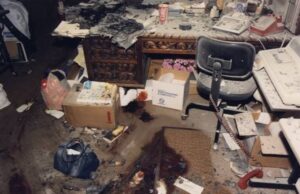 babysitter for his daughters that day, so he had decided that he would drop them at the bowling alley daycare for the Melissa and Amy to watch. As the robbers took cash from the safe, the seven unfortunate people, including Teran and his daughters; cook Ida Holguin (no relation to Paula); manager Stephanie Senac, her daughter, and her daughter’s friend tried to be cooperative in the hope of making it out alive, but the men told them to get down on the ground. Then they shot all of the victims multiple times at close range, aiming mostly for their heads. When the shooting was over, they were still not satisfied with how things stood, so they set fire to some papers in the office of the bowling alley and left.
babysitter for his daughters that day, so he had decided that he would drop them at the bowling alley daycare for the Melissa and Amy to watch. As the robbers took cash from the safe, the seven unfortunate people, including Teran and his daughters; cook Ida Holguin (no relation to Paula); manager Stephanie Senac, her daughter, and her daughter’s friend tried to be cooperative in the hope of making it out alive, but the men told them to get down on the ground. Then they shot all of the victims multiple times at close range, aiming mostly for their heads. When the shooting was over, they were still not satisfied with how things stood, so they set fire to some papers in the office of the bowling alley and left.
Miraculously, Ida, Senac, and Melissa all survived. Melissa, despite being shot five times, was able to call 911. Unfortunately, the fire and subsequent efforts to put out the fire destroyed most of the evidence. In those days, forensics mostly involved fingerprints, which were in abundance in the bowling alley. DNA was not really as  developed at that time. Investigators were unable to discern which fingerprints were meaningful. There were witnesses, of course, who identified the suspects as two Hispanic men, in their 30s or 40s. Roadblocks were quickly set up by the police, to screen anyone leaving town. Still, the suspects were never found. Despite a frequent stream of tips, authorities are no closer to identifying and arresting the suspects today than they were 32 years ago…even with age enhanced pictures. The murders have been shown on multiple crime solving programs, including on Unsolved Mysteries two and a half months after the murders, and on America’s Most Wanted twice, once in November 2004 and again in March 2010. In the end, the crime also took the life of Stephanie Senac, who died in 1999…nine years later, due to complications from her injuries. The men got away with just $4,000 to $5,000, but the victims paid dearly.
developed at that time. Investigators were unable to discern which fingerprints were meaningful. There were witnesses, of course, who identified the suspects as two Hispanic men, in their 30s or 40s. Roadblocks were quickly set up by the police, to screen anyone leaving town. Still, the suspects were never found. Despite a frequent stream of tips, authorities are no closer to identifying and arresting the suspects today than they were 32 years ago…even with age enhanced pictures. The murders have been shown on multiple crime solving programs, including on Unsolved Mysteries two and a half months after the murders, and on America’s Most Wanted twice, once in November 2004 and again in March 2010. In the end, the crime also took the life of Stephanie Senac, who died in 1999…nine years later, due to complications from her injuries. The men got away with just $4,000 to $5,000, but the victims paid dearly.

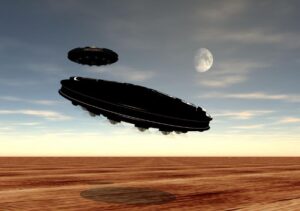 Seventy-five years ago, people began seeing and having an interest in seeing Unidentified Flying Objects (UFOs). A place called Roswell, New Mexico became famous for UFO sightings, and the Air Force found itself denying any sightings. People who saw the UFOs maintained that they “know what they saw!” Roswell, New Mexico is located near the Pecos River in the southeastern part of the state. Roswell became a magnet for UFO believers due to the strange events of early July 1947, when ranch foreman W.W. Brazel found a strange, shiny material scattered over some of his land. It was like nothing he or anyone else had ever seen before.
Seventy-five years ago, people began seeing and having an interest in seeing Unidentified Flying Objects (UFOs). A place called Roswell, New Mexico became famous for UFO sightings, and the Air Force found itself denying any sightings. People who saw the UFOs maintained that they “know what they saw!” Roswell, New Mexico is located near the Pecos River in the southeastern part of the state. Roswell became a magnet for UFO believers due to the strange events of early July 1947, when ranch foreman W.W. Brazel found a strange, shiny material scattered over some of his land. It was like nothing he or anyone else had ever seen before.
I’m not one to believe in UFOs, but I must admit that these were unusual sightings. Public interest in Unidentified Flying Objects, or UFOs, began to flourish in the 1940s, when developments in space travel and the dawn of the atomic age caused many Americans to turn their attention to the skies. Brazel turned the material over to the sheriff, who passed it on to authorities at the nearby Air Force base. Not unexpectedly, the Air Force officials announced they had recovered the wreckage of a “flying disk.” A local newspaper put the story on its front page, launching Roswell into the spotlight of the public’s UFO fascination. I’m sure the newspaper was beyond excited to get the story, because a good story is great for selling newspapers…especially when it is unbelievable.
Of course, in typical government style, the Air Force took back their story, saying the debris had been merely a downed weather balloon. After that, the general public lost interest in the UFO, except for the die-hard UFO believers, nicknamed “ufologists.” With that, the “Roswell Incident” faded into oblivion…until the late 1970s. Then, claims surfaced that the military had invented the weather balloon story as a cover-up. Of course, these would be considered the conspiracy theorists of their day. Believers in this theory insisted that officials had retrieved several alien bodies from the crashed spacecraft, which were now stored in the mysterious Area 51 installation in Nevada. Now, the Air Force had clean-up to do. Seeking to dispel these suspicions, the Air Force issued a 1,000-page report in 1994 stating that “the crashed object was actually a high-altitude weather balloon launched from a nearby missile test-site as part of a classified experiment aimed at monitoring the atmosphere in order to detect Soviet nuclear tests.” Then on June 24, 1997, US Air Force officials release a 231-page report dismissing long-standing claims of an alien spacecraft crash in Roswell, New Mexico, almost exactly 50 years earlier.
Many people have heard this story, of course, and Area 51 remains a mystery to many people to this day. Most think that the whole thing was a hoax or a weather balloon, but now…suddenly, NASA has decided to take up the study of UFOs…seriously!! See, that, to me, seems more like a conspiracy theory or at the very least a way to take our minds off of other events going on in our world today, than it is a legitimate search for UFOs or 
 anything else. According to a story by The Sun, on May 27, 2022, “NASA has reportedly confirmed it will officially join the hunt for UFOs after a groundbreaking UAP Congress hearing earlier this month. Unidentified Aerial Phenomena (UAPs) and official sightings were recently discussed at a public US Congress hearing on May 17. Nasa had previously said it “does not actively search for” or research UAPs.” What a way to spend our money…and why now, after all these years.
anything else. According to a story by The Sun, on May 27, 2022, “NASA has reportedly confirmed it will officially join the hunt for UFOs after a groundbreaking UAP Congress hearing earlier this month. Unidentified Aerial Phenomena (UAPs) and official sightings were recently discussed at a public US Congress hearing on May 17. Nasa had previously said it “does not actively search for” or research UAPs.” What a way to spend our money…and why now, after all these years.
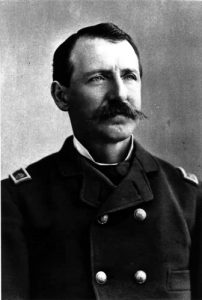 When people go missing these days, we are often not surprised. People seem to go missing all the time. Of course, most of them are murdered, or believed to be murdered. Very few are ever seen again, and as often as not, no one is ever prosecuted for their murder. This is not necessarily a new situation either. On February 1, 1896, one Albert Jennings Fountain and his eight year old son, Henry went missing near White Sands, New Mexico on their way home, after Fountain had attended a court term in Lincoln County. Mrs Fountain reported the two missing, and a search party was sent out the next day. On the Tularosa-Las Cruces road, about 45 miles from his home, the buckboard and team were found, along with Fountain’s papers, several empty cartridge casings, and two pools of blood. Missing were Fountain, his son, and Albert’s Winchester rifle.
When people go missing these days, we are often not surprised. People seem to go missing all the time. Of course, most of them are murdered, or believed to be murdered. Very few are ever seen again, and as often as not, no one is ever prosecuted for their murder. This is not necessarily a new situation either. On February 1, 1896, one Albert Jennings Fountain and his eight year old son, Henry went missing near White Sands, New Mexico on their way home, after Fountain had attended a court term in Lincoln County. Mrs Fountain reported the two missing, and a search party was sent out the next day. On the Tularosa-Las Cruces road, about 45 miles from his home, the buckboard and team were found, along with Fountain’s papers, several empty cartridge casings, and two pools of blood. Missing were Fountain, his son, and Albert’s Winchester rifle.
Albert Jennings Fountain was born in Staten Island, New York on October 23, 1838 to Solomon Jennings, a sea captain, and Catherine de la Fontaine Jennings, Albert grew up to go to Columbia College before traveling all over the world as a tutor. He then settled in California, where he worked at a newspaper before studying law in San Francisco. Though the reasons are unknown, Albert began to go by the name of “Albert Jennings Fountain,” an Anglicized version of his mother’s family name. In August, 1861 he enlisted in the Union Army and was commissioned as an officer in California Column. He participated in the Union conquest of the Confederate Territory of Arizona and fought at the Battle of Apache Pass.
During his time in the army, he married Mariana Perez in October, 1862 and the two would go on to have nine children. By the time he was discharged at the end of the Civil War, Albert had obtained the rank of captain. He and his family settled in El Paso, Texas, where he went to work for the United States Property Commission, which investigated and disposed of former Confederate property. Later he worked as a Customs Collector, was appointed an election judge, and the Assessor and Collector of Internal Revenue for the Western District of Texas. With this background, it is not surprising that he decided to try politics and in 1869, he won a seat in the Texas Senate. Fountain’s radical Republican views angered many Texas Democrats…my kind of guy. During the El Paso Salt War, Albert got into a shootout with a man named B. Frank Williams on December 7, 1870. Albert was wounded three times, but he killed Williams.
In 1875, the Fountain family moved to Mesilla, New Mexico, where his wife was from. It was here that Fountain began his law practice. Southern New Mexico, at that time, was still subject to frequent Indian raids and in 1878, Fountain became a captain in the first company of militia in southeast New Mexico, fighting in the campaigns against Chief Victorio and Geronimo. Continuing to serve in the militia, Fountain would reach the rank of colonel, a title that he was called for the rest of his life. In 1881, he was appointed to defend Billy the Kid in his charge for murder. In 1885, Fountain moved to Las Cruces to prosecute Federal land frauds. In 1888, he was elected to the New Mexico legislature, eventually becoming speaker of the house. Afterwards, he became a special prosecutor for livestock associations. In 1894 convicted 20 men for cattle rustling. His work as a politician and an attorney acquired numerous enemies for Albert, a fact that would prove to be fatal.
After an investigation into the disappearence, it was thought that a noted New Mexico gunman and rancher named Oliver M. Lee, along with two of his employees named Jim Gililland and William “Billy” McNew had perpetrated the crime. Eventually, all three were tried for the crime, but were acquitted for lack of evidence, namely the bodies, and the case remained open, with the Fountain bodies having never been found. Some historians also believe that the famed Sheriff Pat Garrett was assassinated while heavily investigating the Fountain murder, and that he might have been getting close to answering the age old question, “who done it”.
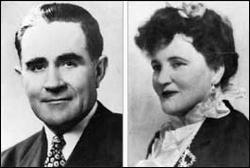 Everyone, at one time or another in their lives has thought about what it might be like to find a hidden treasure. There are many ways that could happen, from a hidden gold mine, to an auction, to the attic, but few can match what it would be like to find a buried treasure in a gold mine. It was the stuff dreams were made of, especially in the Old West. When gold was discovered in California, the Gold Rush started, and while few people ever found their fortune, many people made the journey to try their luck.
Everyone, at one time or another in their lives has thought about what it might be like to find a hidden treasure. There are many ways that could happen, from a hidden gold mine, to an auction, to the attic, but few can match what it would be like to find a buried treasure in a gold mine. It was the stuff dreams were made of, especially in the Old West. When gold was discovered in California, the Gold Rush started, and while few people ever found their fortune, many people made the journey to try their luck.
Victorio Peak was not in California, but it was said to hold a huge cache of gold ingots. The treasure was first discovered by a soldier, who on his death bed in the 1600s, told a monk in a New Mexico monastery about his knowledge of a secret cache of gold ore in the mountains. The monk was Padre Felipe LaRue. LaRue put together a band that purportedly located the mine and successfully drew ore from it for three solid years. When 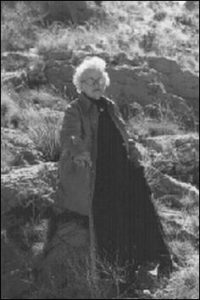 the Mexican Army was sent to overtake LaRue’s operation, he ordered workers to close the entrance to the mine with a landslide and, soon thereafter, LaRue’s entire camp took information about the location with them to the grave at the hands of the soldiers.
the Mexican Army was sent to overtake LaRue’s operation, he ordered workers to close the entrance to the mine with a landslide and, soon thereafter, LaRue’s entire camp took information about the location with them to the grave at the hands of the soldiers.
Fast forward to 1937, when a New Mexico couple named Ernest and Ova Noss were said to have stumbled upon a narrow entrance to this mine while hunting, and then returned several times to collect the heavy gold ingots from the secret location. When Ernest tried to open the mine further with a blast of TNT, it was inadvertently sealed despite repeated attempts to reopen it. When the White Sands Missile and Bombing Range was expanded in 1955 to include the land, Ova Noss supposedly sent a party to investigate and they reported that Army officials were seen digging near the site. Still, the Army never made any mention of the Victorio gold.
In 1977, ground-penetrating radar identified an open area underground near where the Noss’ claim might have been. In the 1990s, a locked steel door was said to have been found covering the site of the original shaft.  Whatever the case may be, a reported 88 solid gold ingots were brought forth from the mountains of New Mexico by the Noss couple, and it is unlikely the public will ever know exactly what became of the site and its associated treasure. Some people think the whole legend is a con, but shortly before her death in 1979, Ova Noss was a the White Sands Missile Range seeking access to her claim. Access was denied, and to this day her family and their organization called The Ova Noss Family Partnership continue to push for access to the mine, although in my mind, it is doubtful that they would find much today, since the mine has been under the exclusive control of the missile base for a long time.
Whatever the case may be, a reported 88 solid gold ingots were brought forth from the mountains of New Mexico by the Noss couple, and it is unlikely the public will ever know exactly what became of the site and its associated treasure. Some people think the whole legend is a con, but shortly before her death in 1979, Ova Noss was a the White Sands Missile Range seeking access to her claim. Access was denied, and to this day her family and their organization called The Ova Noss Family Partnership continue to push for access to the mine, although in my mind, it is doubtful that they would find much today, since the mine has been under the exclusive control of the missile base for a long time.
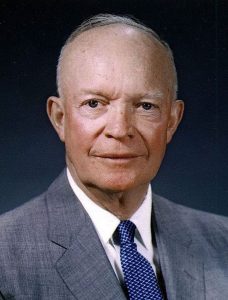 Recently, I found out that President Dwight D Eisenhower is my sixth cousin six times removed. We are connected on my mother’s side through her Pattan roots, which is her mother’s side. Eisenhower was the 34th president of the Unites States, serving from January 20, 1953 to January 20, 1961. He was also a five-star general in the United States Army during World War II and served as Supreme Commander of the Allied Expeditionary Forces in Europe. Eisenhower was responsible for planning and supervising the invasion of North Africa in Operation Torch in 1942 – 1943 and the successful invasion of France and Germany in 1944 – 1945 from the Western Front. In 1951, he became the first Supreme Commander of NATO.
Recently, I found out that President Dwight D Eisenhower is my sixth cousin six times removed. We are connected on my mother’s side through her Pattan roots, which is her mother’s side. Eisenhower was the 34th president of the Unites States, serving from January 20, 1953 to January 20, 1961. He was also a five-star general in the United States Army during World War II and served as Supreme Commander of the Allied Expeditionary Forces in Europe. Eisenhower was responsible for planning and supervising the invasion of North Africa in Operation Torch in 1942 – 1943 and the successful invasion of France and Germany in 1944 – 1945 from the Western Front. In 1951, he became the first Supreme Commander of NATO.
With everything else that he did, it seems odd, I suppose, to mention the fact that on March 18, 1959, he signed the Admission Act. Basically, the act dissolved the Territory of Hawaii and established the State of Hawaii as the 50th state to be admitted into the Union. Statehood became effective on August 21, 1959…the last state to join the United States. Eisenhower, in fact, was the president who signed the last two states into the United States. To me that must have been such an awe inspiring thing to get to do. My guess is that Eisenhower really had no idea that Hawaii would forever be the last state in the United States, and I suppose that it is still possible that 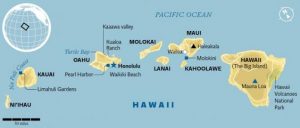 another may join, but it has been almost 58 years, so it seems highly unlikely that there will be another. I wonder if, as his life was drawing to a close, Eisenhower gave any thought to the fact that he got to do that…to bring in the final two states in the United States. I also wonder if anyone thought there would ever be more states after Arizona and New Mexico were added in 1912, almost 47 years earlier. Maybe, adding another state to our country didn’t seem like such an important thing for a president to do, but I think it is. And to be the president to add the last two states…well, I just think that is very cool.
another may join, but it has been almost 58 years, so it seems highly unlikely that there will be another. I wonder if, as his life was drawing to a close, Eisenhower gave any thought to the fact that he got to do that…to bring in the final two states in the United States. I also wonder if anyone thought there would ever be more states after Arizona and New Mexico were added in 1912, almost 47 years earlier. Maybe, adding another state to our country didn’t seem like such an important thing for a president to do, but I think it is. And to be the president to add the last two states…well, I just think that is very cool.
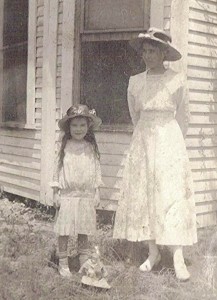 My Aunt Laura was born 10 years before the rest of her siblings, and so was an only child for those 10 years. I have often wondered about the historical changes that took place during those 10 years. She was born just a 4 months after the RMS Titanic sunk, and the world was still reeling from the devastating loss of life, and trying to figure out how to make sure such a tragedy never happened again. Travel by ship has changed immensely since that time, and a lot by 1922, when my Uncle Bill was born. No, that doesn’t mean that there are no ship wrecks, and that lives lost at sea have been reduced to zero, but the people on ships have a better chance of surviving, simply because the radios are never turned off. They are manned 24 hours a day, so that emergency calls can go out and be received. Had that been the case in 1912, the 1,502 lives lost might have been saved. No one was killed in the initial collision. A radio call could have changed everything, but the nearest ship…the SS Californian never heard the distress call, because the radio had been turned off for the night. The inadequate number of lifeboats on the RMS Titanic would have been enough to ferry all the passengers to safety, had the SS Californian heard the call. That loss changed much about ocean travel, and those changes took place during those 10 years when my Aunt Laura was an only child, and her younger siblings would not know a time without those safety regulations in place…not that they would affect them any.
My Aunt Laura was born 10 years before the rest of her siblings, and so was an only child for those 10 years. I have often wondered about the historical changes that took place during those 10 years. She was born just a 4 months after the RMS Titanic sunk, and the world was still reeling from the devastating loss of life, and trying to figure out how to make sure such a tragedy never happened again. Travel by ship has changed immensely since that time, and a lot by 1922, when my Uncle Bill was born. No, that doesn’t mean that there are no ship wrecks, and that lives lost at sea have been reduced to zero, but the people on ships have a better chance of surviving, simply because the radios are never turned off. They are manned 24 hours a day, so that emergency calls can go out and be received. Had that been the case in 1912, the 1,502 lives lost might have been saved. No one was killed in the initial collision. A radio call could have changed everything, but the nearest ship…the SS Californian never heard the distress call, because the radio had been turned off for the night. The inadequate number of lifeboats on the RMS Titanic would have been enough to ferry all the passengers to safety, had the SS Californian heard the call. That loss changed much about ocean travel, and those changes took place during those 10 years when my Aunt Laura was an only child, and her younger siblings would not know a time without those safety regulations in place…not that they would affect them any.
In early 1912, just months before my Aunt Laura turned 2, New Mexico became the 47th state, on January 6, 1912, and Arizona became the 48th state, on February 14, 1912. Our nation would continue to have only 48 states until 1959, when on January 3rd, Alaska, and on August 21, Hawaii joined the Union. Aunt Laura probably didn’t remember a time when there were only 46 states, much like I, at 2 and then 3, don’t remember having only 48 states, but nevertheless, history tells us that we lived in a time when that was so. Aunt Laura’s siblings, like my own little sisters, except Caryl who lived when there were only 49 states for a few months, since she was 4 months old when Alaska became a state, lived in a time when there were more states than when their older siblings were born.
Just one week before my Aunt Laura’s 4th birthday, the United States would be drawn into World War I. The beginning of the war was probably something that didn’t make much difference to her, but by it’s official end, on November 11, 1918, she was old enough to know what it was all about, and may have even known someone who lost a loved one in the fighting. World War I was just another piece of history by the time my aunt’s younger siblings were born, and I’m sure hearing about it through the years had little effect on them, unlike their 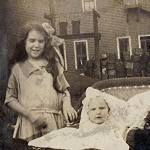 older sister. World War II would be a very different matter for the younger siblings, as they would all be involved in that war in one way or another.
older sister. World War II would be a very different matter for the younger siblings, as they would all be involved in that war in one way or another.
There were many things that my Aunt Laura experienced, that her younger siblings did not. Much of it was without her having any real knowledge of it, but looking back, she would always know it was so. Just like I find it very odd to know that during my lifetime, ships have sunk, wars have been fought, and states have been added to make us the 50 United States that we know today, I’m sure she sometimes marveled at the difference ten years can make.

